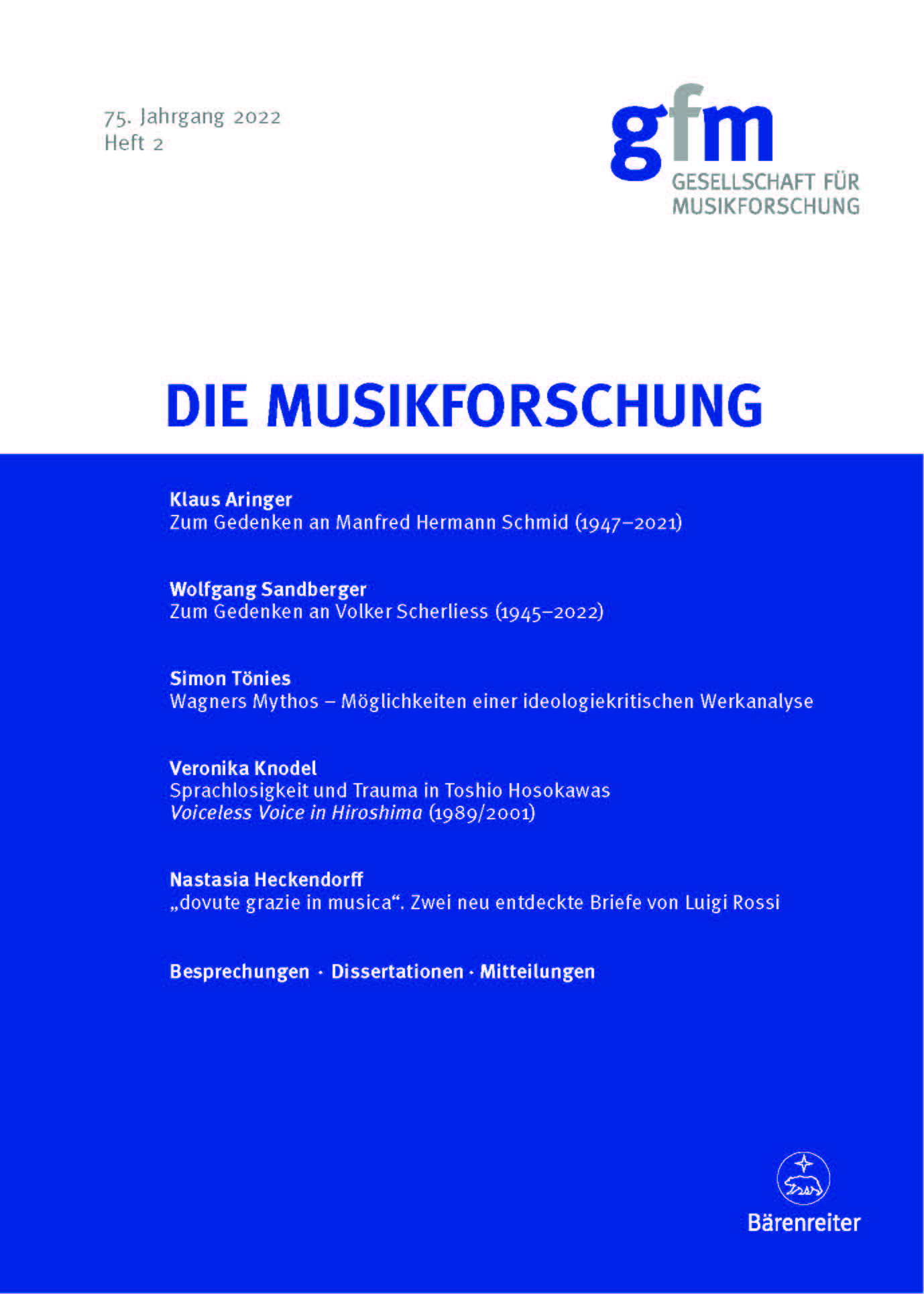Sprachlosigkeit und Trauma in Toshio Hosokawas "Voiceless Voice in Hiroshima" (1989/2001)
DOI:
https://doi.org/10.52412/mf.2022.H2.3042Abstract
The oratorio Voiceless Voice in Hiroshima (1989/2001) by the Japanese composer Toshio Hosokawa commemorates the atomic bombing of Hiroshima on 6 August 1945. While the contemporary composer has received considerable attention in music criticism and musicological writings, his oratorio has rarely been considered. Voiceless Voice in Hiroshima represents not only a central point of reference for Hosokawa’s aesthetic ideas; it also offers insights into his understanding of music, nature and humanity. In this work Hosokawa merges the Japanese topos of the seasonal cycle with the genre of the oratorio. The latter connects the work with a post-war tradition, where religious, literary, philosophical and political texts are embedded in the Christian Requiem, in order to mourn the traumatic events of the Second World War. Since 1945 the oratorio has become a central medium of memory for the Second World War. This article develops an interpretation of Voiceless Voices in Hiroshima against the backdrop of research into cultural memory and psychological approaches to trauma: While in the second movement eyewitness accounts, political speeches and the sounds of sirens recall the trauma of war, the later movements represent processes of regeneration and self-discovery under the auspices of the changing of the seasons. In this process, the notion of “breath” is of paramount importance, its flowing and abrupt stopping illustrating the struggle for verbal and vocal expressiveness.






